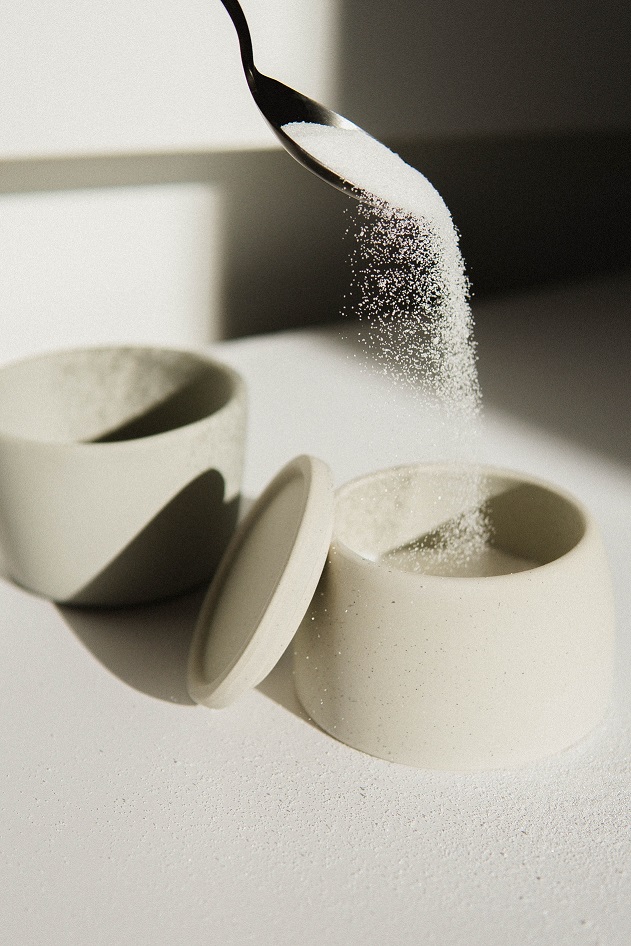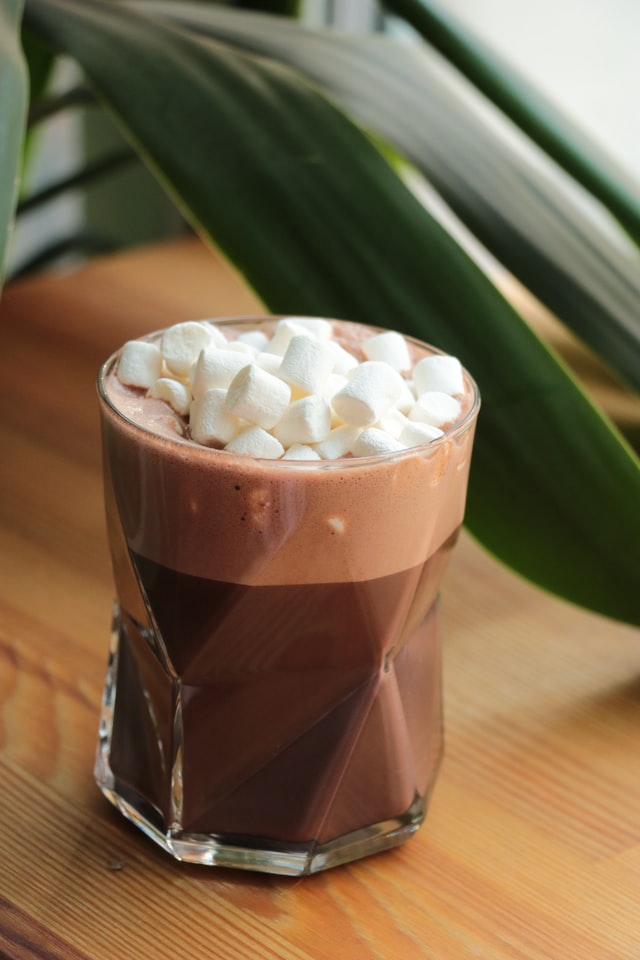Sugar, The Most Disastrous Toxic Ingredient Wreaking Havoc On Our Health

As I began my health journey, the devastating effects of sugar and the impacts that it brings as an inflammatory response in our bodies was brought to light for me. I remember as a child hearing, “you are what you eat.” I would shrug it off as I would drink a soda or eat some cookies not even considering how harmful sugar could be. Never before in my life have I believed this statement to be more true than I do now. The literature I have read, how I feel with the foods I choose to eat (and not eat), and my test results from wellness checks all support that old-adage childhood statement “You ARE what you EAT”. Over the last seven years I have made the conscious decision to eat healthy and I feel the healthiest I have felt for many years prior. Now, I take that statement a step further when I speak about food choices, “Food can either be your cure or your poison.” I strongly believe that what we eat either supports a healthy body or causes us to have chronic health problems.
Before I made a change to my diet, I felt rundown all the time. I suffered daily from symptoms of allergies, asthma, acid reflux and chronic sinus infections. I often had respiratory infections of bronchitis and pneumonia. Many days I felt like I could barely function to get through the day, and when I came home from work I would feel exhausted. I was constantly in discomfort with headaches, heartburn and congestion from the acid reflux and sinus issues. Believing to be eating fairly healthy, I cooked most of my meals and always had a vegetable with each meal. I drank soda but not all the time and I did indulge in dessert most days. In addition, I ate some fast food occasionally but not all the time. So what was causing me to feel so poorly? Food was what was ailing me. Now I needed to make a change.
Suffering from multiple chronic inflammatory illnesses, I can tell you first-hand how sugar impacted my health and how eliminating it from my diet brought me the best health of my life. For most of my life, I received allergy shots as a teenager and used an inhaler as an adult for bouts of recurrent respiratory illnesses. I also suffered from acid reflux (GERDS) and for more than five years. I had been taking Nexium daily to calm the symptoms which were only being masked and not fully relieved.
In the spring of 2014, I began eliminating all sugary drinks, most desserts and reducing eating wheat (which breaks down into sugar). The chronic ailments began falling away as I slowly reduced my medications. After six months, I no longer took any medications. More importantly, I no longer had ANY symptoms of acid reflux, asthma, allergies, and for 7 years now, I have not had one case of pneumonia, bronchitis or any sinus or respiratory infections.
[This post contains affiliate links. If you make a purchase, we make a small commission paid for by the vendor at no additional cost to you! We only suggest products we personally use and love, and know will make your life easier and healthier.]
Impacts of sugar through chronic inflammation leads to many modern diseases
The root of many chronic illnesses are attributed to added sugar in our diets causing chronic inflammation which has led to a serious health crisis in our country. Specifically, excess sugar consumption has been associated with obesity, type 2 diabetes, cardiovascular disease, certain cancers, non-alcoholic fatty liver disease and other illnesses. Following is a list of modern diseases and a brief description of how sugar impacts each of them:
- Obesity – Consuming large amounts of sugar can cause significant weight gain.
- Type 2 Diabetes – Sugar does not cause type 2 diabetes, but a diet high in sugar has been connected to an increased risk due to the association between sugar and obesity.
- Cardiovascular disease – Sugar intake increases the risk for heart disease. Every sugary drink you consume in a day increases your chance of heart disease by 8%. Being overweight or obese can also lead to a higher risk of heart disease. High levels of inflammation have been connected to heart attack or stroke.
- Cancer – Some evidence has shown that large amounts of sugar can be linked with some cancers.
- Liver Disease – Fatty liver disease is non alcohol related and caused by excessive added sugar and high fructose corn syrup, which is common in many processed foods.
- High Blood Pressure – Sugary foods and drinks lead to obesity which then can lead to high blood sugar.
- Dementia – Above normal blood sugar levels have shown to have an association for a higher risk of developing dementia.
- Autoimmune Illnesses – Both the development of autoimmune conditions and autoimmune disease flare-ups are associated with inflammation. Sugar can increase inflammation causing more outbreaks.
- Allergies/Asthma – Inflammation from a sugar-rich diet may impact airways by becoming more narrow and increasing mucus.
- Acid Reflux due to GERD – New study done by the American Medical Association states that an inflammatory response in the body along with the stomach acid is causing the harm.
Testing for chronic inflammation
Chronic inflammation can be measured with a simple blood test called C-Reactive Protein (CRP). CRP blood test is an indicator that monitors hidden inflammation. This inflammation can make you more at risk for cardiovascular disease, autoimmune diseases, bowel diseases, type 2 diabetes, cancer, asthma and ulcerative colitis. A CRP reading of under 1mg/L means you are at low risk, moderate risk is between 1-3mg/L and high risk is over 3mg/L.
Why is sugar so bad for our bodies?

“Added sugar is the single worst ingredient in the modern diet.” This article shows a chart with beverages and the amount of sugar associated with each of them. A small chocolate milk at school can have anywhere between 22-28 grams or 6-7 teaspoons of sugar. The American Heart Association states that children between the ages of 2-18 should consume less than 6 teaspoons of sugar a day. Hard to do when your child has already consumed their daily allowance with one carton of chocolate milk at school.
Most added sugar that people consume in their daily diets that contribute to their high level of sugar intake is through beverages and desserts. Beverages are the leading source for nearly 50% of added sugars. Along with the high level of sugar consumed in beverages and desserts we add packaged food to our diets and with that additional sugar. 74% of packaged food in the grocery aisles are laden with hidden added sugars that you may not expect.
How much ADDED sugar should you have in a day?
*Added sugar differs from natural sugar which is naturally occurring- i.e. fruit*
In 2012, the average adult consumed 77 grams or 19 teaspoons of sugar in a day according to Healthline. In 2020 the amount of sugar has lowered to 71 grams of sugar (17 teaspoons) daily. Heightened awareness of the importance of drinking water (read our post on water here) has shown a small reduction in overall grams of sugar for the average adult in the past eight years. Even more alarming is children who, on average, consume 34 teaspoons of sugar a day. Unfortunately, the consumption of added sugar for both children and adults is still much higher than the American Heart Association advises. The maximum amount of added sugar the AHA says we should ingest in a day to stay heart healthy is as follows:
- Men: 37 grams or 9 teaspoons of added sugar a day
- Women: 25 grams or 6 teaspoons of added sugar a day
- Children 2-18: less than 25 grams or less than 6 teaspoons a day
When you consider the amount of sugar we SHOULD limit ourselves to and then look at the list of food/drinks below (or labels of the foods you eat and drink) you quickly recognize that we as a society are consuming enormous amounts of sugar. The listed items are just the more obvious products. Sugar looms in most processed and packaged foods.
Packaged foods/drinks and their sugar content (one serving size)

- Honey-Nut Cheerios – 9 grams or 2 tsps
- Cocoa Puffs – 10 grams or 2 ⅓ tsps
- Frosted Flakes – 14 grams or 3 ½ tsps
- Yoplait yogurt – 13 grams or 3 tsps
- Nutrigrain Bar – 12 grams or 3 tsps
- Chips Ahoy chocolate chip cookie – 11 grams or 2 ⅔ tsps
- Ice cream – 14 grams or 3 ⅓ tsps.
- Peanut M &M’s (1 package)- 25 grams or 6 tsps
- Starburst Jelly Beans (¼ cup)- 29 grams or 7 tsps
- Milky Way (1 bar)- 31 grams or 7 ½ tsps
- Sour Skittles (1 package) 37 grams or 8 ¾ tsps
- Chocolate cake with icing (1 piece) – approximately 37 grams or 8 ¾ tsps
- White Milk – 12 grams or 3 tsps
- Chocolate Milk – 25 grams 6 tsps
- Apple Juice – 24 grams or 5 ¾ tsps
- Kool Aid – 16 grams or 3 ¾ tsps
- Tropicana Orange Juice – 42 grams or 10 tsps
- Pepsi (12 ounce can) – 41 grams or 10 tsps
- Mountain Dew (12 ounce can) – 46 grams of sugar or 11 ½ tsps
- Red Bull (12 ounce can) – 37 grams of sugar or 8 ¾ tsps
- Big Gulp (32 ounce) of Coca Cola – 91 grams or 21 ¾ tsps
- Grande Caramel Macchiato (Starbucks) – 34 grams or 8 ⅛ tsps
- Gatorade Thirst Quencher (20 ounce) – 36 grams or 8 1/2 tsps
After reviewing this list of packaged foods/snacks/drinks with the thought of how many teaspoons a day of added sugar we can quickly see how our nation’s health on the whole has declined over the years. We have been bombarded by marketing schemes as well as aisles and aisles of packaged foods having large amounts of sugar. Most Americans are probably over the daily recommended amount of sugar by the time they have finished their breakfast.
How did we get here?
Dietary guidelines in the United States were shaped after research in the late 50’s and early 60’s done by researcher Ancel Keyes. In the Seven Country Study, he carefully picked the countries he thought would support his hypothesis that saturated and unsaturated fat cause heart disease, diabetes and obesity. What he didn’t look at was countries eating higher amounts of fat were also eating high amounts of sugar. This study ignored the effects of sugar and supported replacing saturated fats with vegetable oils. The American Heart Association had already bought into the hypothesis and the US government began to pressure Americans to follow a low-fat diet.
In the 1980’s, the “low-fat” revolution began first as a statement from the government to eat less fat and then from the food industry that used it as a marketing ploy to sell low-fat products. But with the low-fat items, sugar was added to make up for the loss of flavor. Since that time people have been fearing natural fat and have replaced it with carbs. During this same time, both obesity and diabetes have skyrocketed. In 1958, 1.5 million suffered from diabetes. By 1980, the number had grown to 5.5 million and now in 2020 the number of those suffering from diabetes has soared to 34.2 million (90-95% are Type 2). This number represents 1 in every 10 Americans. Additionally, 88 million more people are pre-diabetic and many may not even know. Regarding obesity, in 1980, 4.8% of men and 7.9% of women were considered obese. Today, obesity ranges from 39-46% of the American population depending on age, gender and race, according to recent data.
“Low-fat” foods being promoted and marketed to the public have used sugar (and other unhealthy sweeteners) to make them palatable to the ever sweetening American tongue. To confuse or hide the use of sugar in food products to the general population, alternative names are used. Listed below are sweeteners to be aware of when reading labels at the grocery store.
Alternative names for Sugar + other Unhealthy Sweeteners

Look for these names as you look at the ingredients on the labels in the food you choose when shopping at the store. Using terms other than sugar is a strategy to confuse the shopper and make them think that there is no sugar in the product they are buying. It is just another unhealthy sweetener.
- Galactose
- High fructose corn syrup
- Dextrose
- Maltose
- Lactose
- Sucrose
- Cane or raw sugar
- Corn sweetener
- Barley Malt
- Rice Syrup
Alternative HEALTHY Sweeteners
Here is a list of replacement sweeteners you can substitute for your coffee, mixed drinks or baked goods. Pay close attention to the amount that you use. Some of the sweeteners require a small amount to equal what you would typically use when you bake or mix with sugar.
- Stevia
- Erythritol (Truvia, Swerve)
- Monk fruit
- Xylitol E
- Honey
- Maple syrup (use sparingly)
- Molasses (used sparingly)
Transform your health by replacing and/or reducing sugar in your diet
Sharing my experiences of my health journey in the perspective of sugar will hopefully give you the knowledge and belief that if it can work for me and change my life, it can do the same for yours. Being aware of how sugar is in most processed and packaged foods and can be under an assumed name can guide you in what you choose to buy or not buy. Realizing that sugar is at the root of many long-term illnesses, may have you reconsider the amount of sugary drinks and foods you eat and drink. Because beverages are responsible for at least 50% of sugar intake for most people, eliminating or greatly reducing those beverages alone could change your health for the better. Start by looking for fresh squeezed juices at the store, ask for sugar-free options at Starbucks, and always carry a water bottle with you. These are first steps to assist you on lowering your sugar levels.

Hi my name is Victoria! After years of struggling with illnesses, I began a journey of finding healthier alternatives in every aspect of my life. Over the past 7 years, I have researched health, nutrition, sustainability and gardening, and I am looking forward to sharing that knowledge with you!